Unveiling a Troubling Trend
Stomach cancer, once thought to predominantly affect older adults, is increasingly striking a younger demographic, particularly young women. National Geographic’s comprehensive sheds light on this concerning trend, delving into the factors contributing to the rise in stomach cancer cases among this demographic.

Traditionally, stomach cancer has been more prevalent among older individuals, often linked to factors such as diet, lifestyle, and genetics. However, recent data indicates a shift, with a notable increase in diagnoses among young women. This shift challenges conventional perceptions of the disease and underscores the need for a deeper understanding of its underlying causes and ramifications.
Exploring Possible Contributors
National Geographic’s comprehensive explores various factors that may contribute to the rising incidence of stomach cancer among young women. Changes in dietary habits, including an increase in processed foods and a decline in fresh fruits and vegetables, are among the potential culprits. Additionally, lifestyle factors such as obesity, smoking, and alcohol consumption may play a role in elevating stomach cancer risk among this demographic.

Furthermore, emerging research suggests a possible link between stomach cancer and infection with Helicobacter pylori, a bacterium commonly associated with gastric ulcers. Understanding the interplay between these factors and their impact on stomach cancer risk is crucial for developing effective prevention and intervention strategies to address this growing health concern.
In conclusion, the rise of stomach cancer among young women represents a concerning health trend that demands attention and action. By uncovering the multifaceted factors contributing to this phenomenon, National Geographic’s comprehensive provides valuable insights into the complex nature of the disease and highlights the importance of early detection, lifestyle modification, and targeted interventions in combating its prevalence among young women.
Amelia Earhart Mystery: Bones Discovered on an Island Are Hers

When it comes to the most influential women of all time, there is no denying that Amelia Earhart is right up there with the very best. The American aviator made history when she became the first female pilot to fly solo across the Atlantic. Ever since she vanished, historians and archeologists have speculated and invested their entire lives trying to figure exactly what happened to Amelia Earhart. Many rumors have surfaced over the years. One professor believes that he has found the key to the pilot’s fate. Join us as we explore the mysterious disappearance of Amelia Earhart and the recent developments surrounding it.
Finally Found?
Amelia Earhart made history when she became the first female pilot to fly over the Atlantic Ocean. However, during a flight around the globe in 1937, she vanished and was never heard from again…until now.

After years of intense speculation and investigation, a group of researchers may have finally unlocked the secrets behind Earhart’s puzzling disappearance all those years ago. The mystery of Amelia Earhart may have finally been solved.
New Breakthrough
A new breakthrough may have finally shed new light on the age-long mystery of Amelia Earhart’s disappearance. In recent times, Prof. Richard Jantz, who is a professor at the University of Tennesee, has made a discovery that potentially proves a popular theory, while casting many others aside.

While many have wildly speculated about the nature of her disappearance, this may be the confirmation that historians and fans of the groundbreaking pilot have been looking for all this time.
Plane Discovered?
Another mystery surrounding Earhart’s disappearance is working out what happened to her plane. Although the Lockheed Electra aircraft has never been officially discovered, a group of scavengers reportedly unearthed part of what they consider to be the wreckage back in 1991.

Tighar, or The International Group of Historic Aircraft Recovery, found the aluminum piece on the island of Nikumaroro. Tighar’s executive director Ric Gillespie announced in 2014 that scientists had concluded that the relic must’ve been part of Earhart’s plane.
More Evidence
Although Tighar’s findings impressed many once they were revealed, there were numerous critics who were skeptical about Gillespie’s announcement. One critic said that “everybody should have facts to back up [their] opinions, and Mr. Gillespie, well, he doesn’t.”

However, the organization also found an “ointment pot” that resembled Dr. Berry’s Freckle Ointment. Due to Earhart’s skin complexion, Gillespie deduced that she may have taken it with her. “Earhart had freckles and is known to have considered them unattractive,” Gillespie said.
Died At Sea?
The most plausible theory for many years, and the official U.S. position on Amelia Earhart’s disappearance is that she ran out of fuel during her trip and crashed somewhere in the Pacific Ocean.
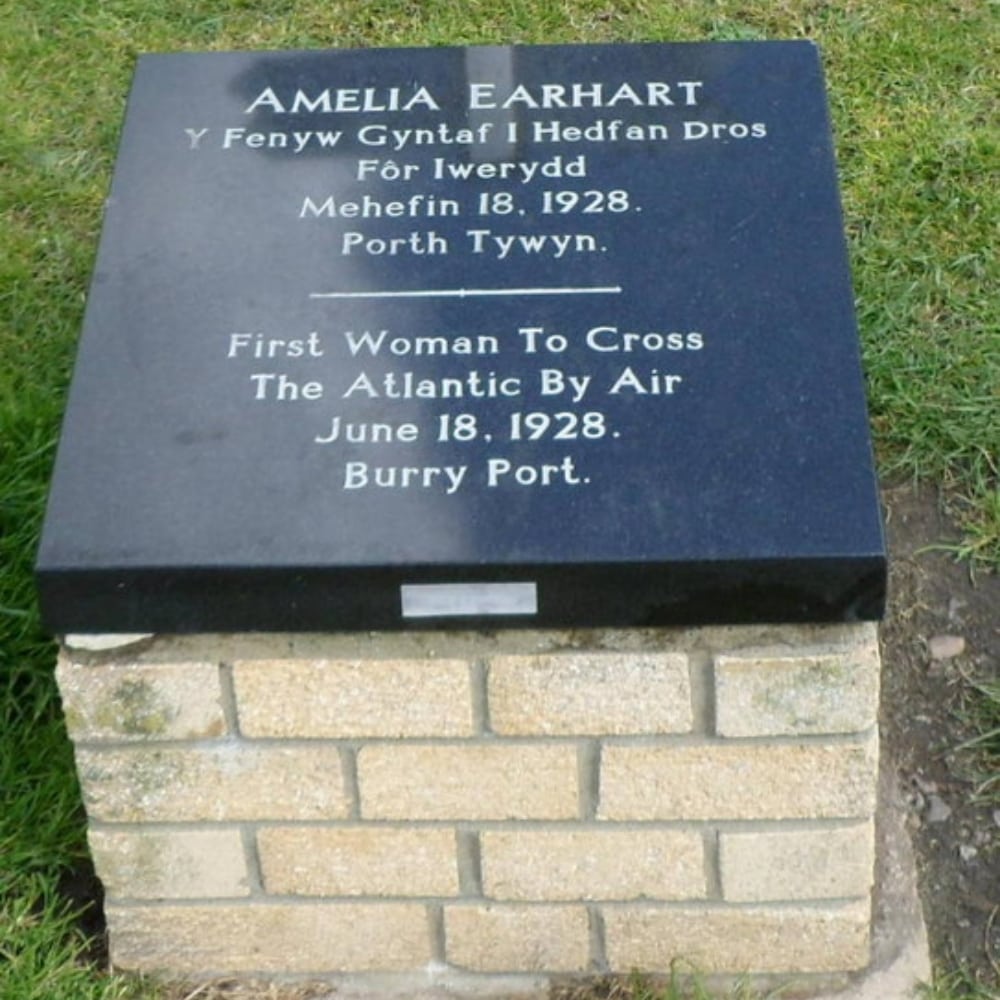
The Electra never made it to Howland Island, which was where Amelia was trying to get to in order to stock up on fuel. To this day, search teams are making regular expeditions to the Howland Island vicinity in search of her plane. However, this is just one theory…
True Story?
In 1960, an old American coastguard by the name of Floyd Kilts told a story he had heard 14 years prior. It was about a man who was walking on Nikumaroro and stumbled across something incredible. “There in the brush about 5ft feet from the shoreline he saw a skeleton,” Kilts said.
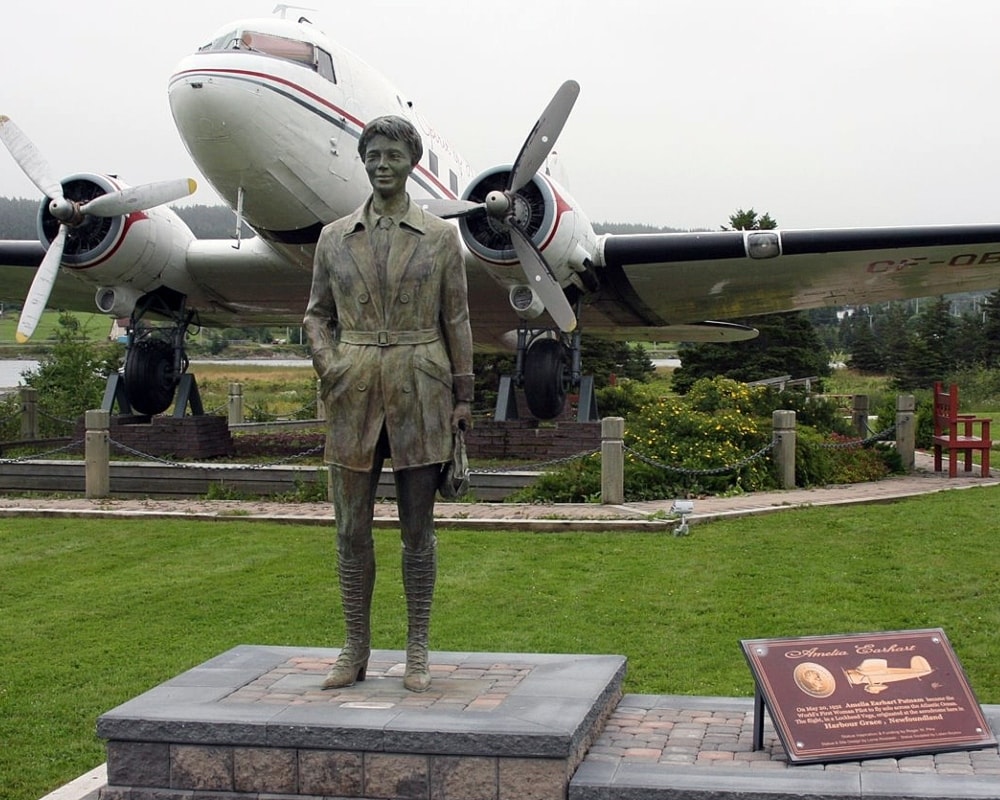
“What attracted him to it were the shoes. Women’s shoes, American kind…” For many years, researchers wondered whether his story was alluding to the disappearance of Amelia Earhart…
Mysterious Bones
In 1940, a collection of bones were discovered on the Pacific island of Nikumaroro. A rescue team actually found the bones while on an expedition to the island. They were determined to find Earhart, and firmly believed that the bones belonged to her.
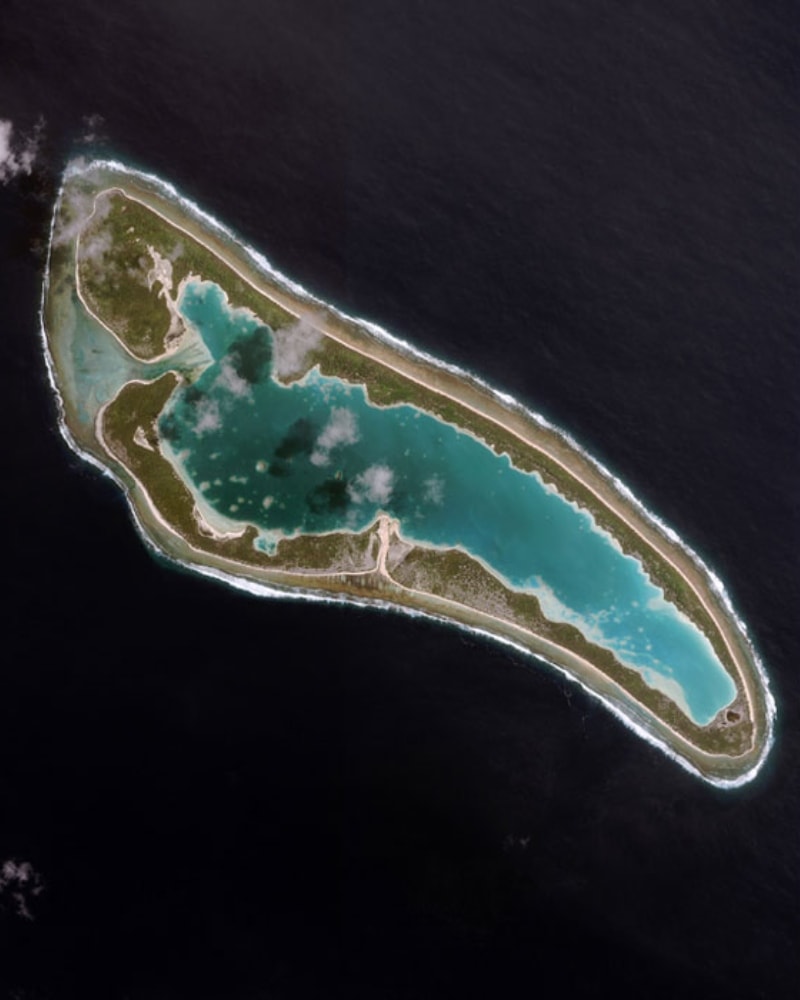
The main reason behind their theory was that the island was very close to her flight path. However, since the dawn of forensics in the 20th Century, scientists were eventually able to settle the score once and for all…
Did They Belong To Her?
During the 1940s, scientists did everything in their power to try and uncover the identity behind the discovered bones. However, as hopeful as they were to prove that they did belong to Amelia Earhart, the signs were all pointing to that not being the case.

The distinctive features of the bones suggested that they actually once belonged to a man. Since then though, forensic analysis has become more advanced, and new studies have provided fresh results…
Captured?
The photo below is the image that many historians have clung onto in belief that Amelia Earhart was actually captured by the Japanese during her trip across the Pacific. The photo reportedly shows Earhart and her flying partner Fred Noonan on the Jaluit Harbor of the Marshall Islands.

The Post‘s Amy B Wang referred to “a figure with Earhart’s haircut and approximate body type sits on the dock, facing away from the camera.” The photo is still the source of heavy debate to this day.
Bumpy Ride To Glory
May 21, 1932, was the date that Amelia Earhart became the first woman to fly non-stop across the Atlantic by herself. However, it wouldn’t come without its fair share of danger. At one point, four hours into the flight, to be precise, Earheart got into some trouble.
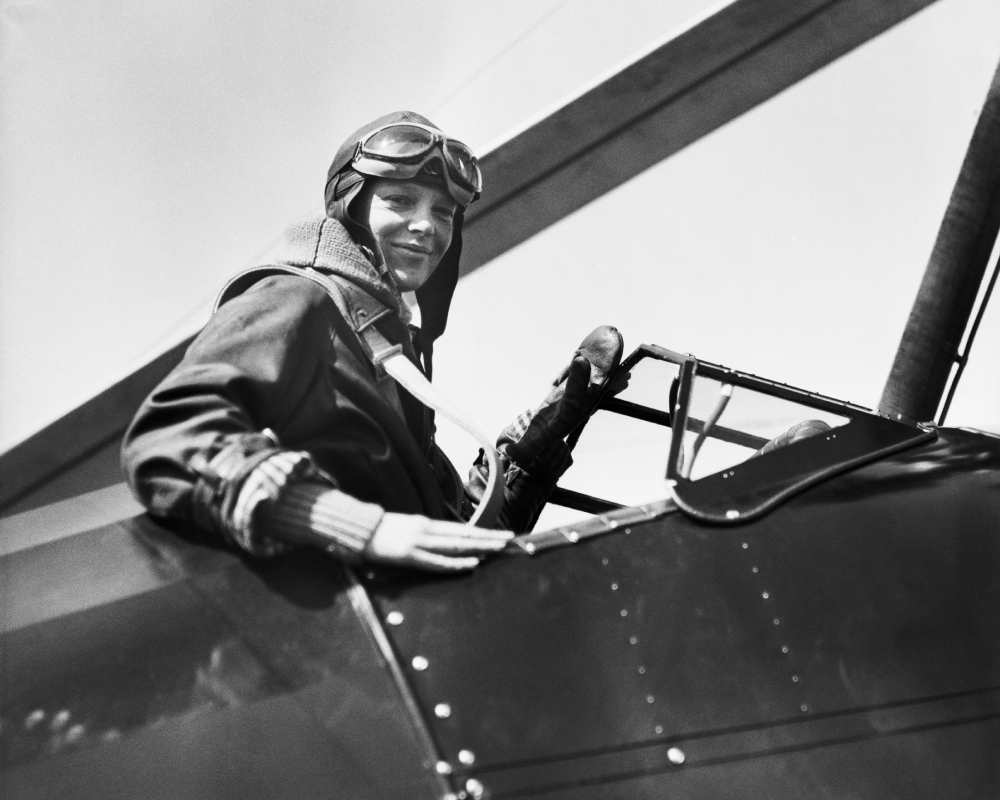
“I saw flames shooting from the exhaust pipe,” she said. “I became uneasy…It would have taken four hours to return, however, so I thought it would be safer to go ahead.” To make matters worse, her fuel tank was leaking.
Happy Landing
For a while, it seemed like Amelia was destined to fail in her attempt at crossing the Atlantic. However, fate had other plans, and 20 hours and 40 minutes after leaving Trepassey Harbor, Newfoundland, Earhart arrived at Pwll, close to Burry Port, South Wales.
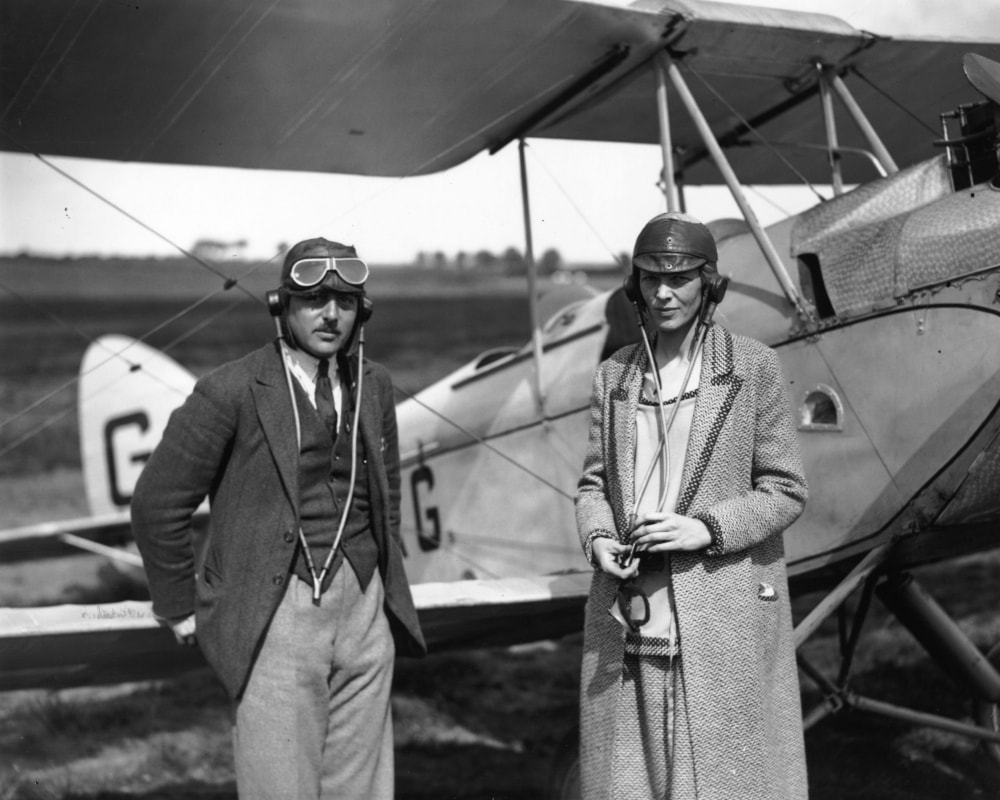
“After scaring most of the cows in the neighborhood, I pulled up in a farmer’s back yard,” she said. A farmer reportedly asked her, “have you flown far?” to which she replied, “from America.”
Trip That Changed Everything
In stark contrast, Earhart’s flight across the Pacific in the following decade had very different consequences. She had already become the first woman to fly across the ocean, flying from Honolulu to Oakland, California.
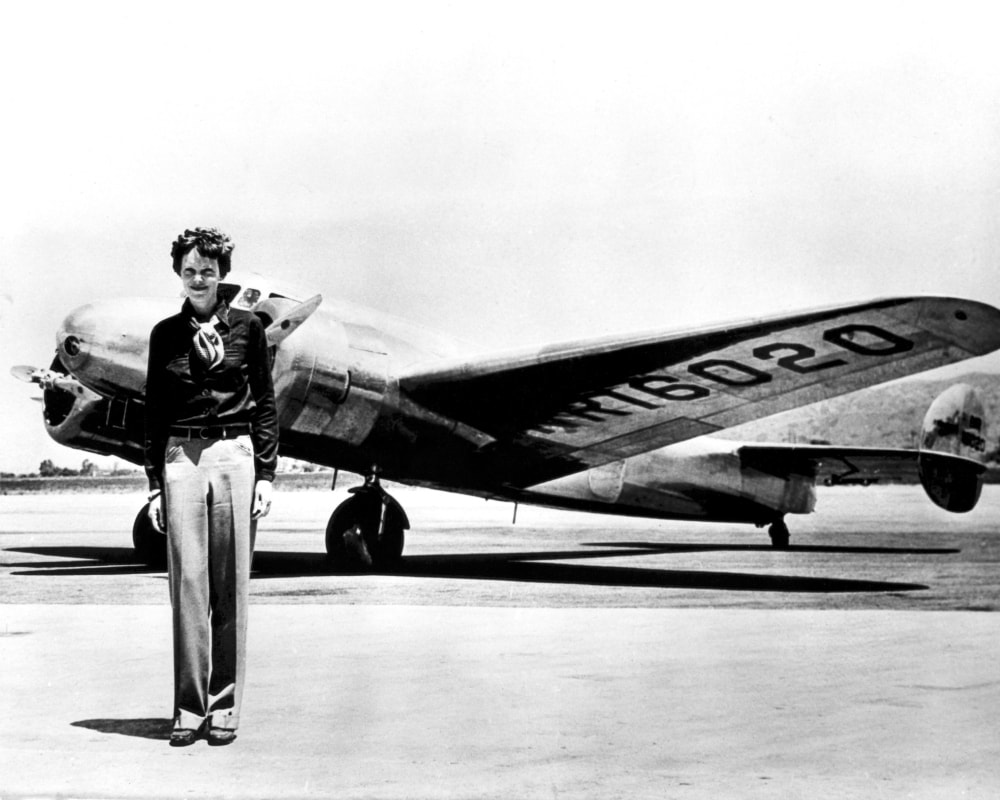
However, after raising $80,000, Earhart and her flying partner Fred Noonan decided to go on a trip around the globe. They did incredibly well, successfully flying 29,000 miles. Ultimately though, it was their last stretch from Lae, New Guinea that changed everything. They “only” had 7,000 more miles to go…
Never Heard From Again
On July 2, 1937, after setting off for their final stretch, Earhart and Noonan were having communication issues with their next fuel stop in Itasca. Before setting off, they were told that the forecast predicted fairly mild weather.

However, clouds appeared instead, making it virtually impossible for Noonan to navigate by the stars. The last time that the duo said anything was at 8.43am, when Earhart said, “we are running north and south.” They were never heard from again.
Feminist Icon
If there is one thing that all people are in a unanimous decision about when it comes to Amelia Earhart, it is that she is one of, if not the most influential woman of all time.
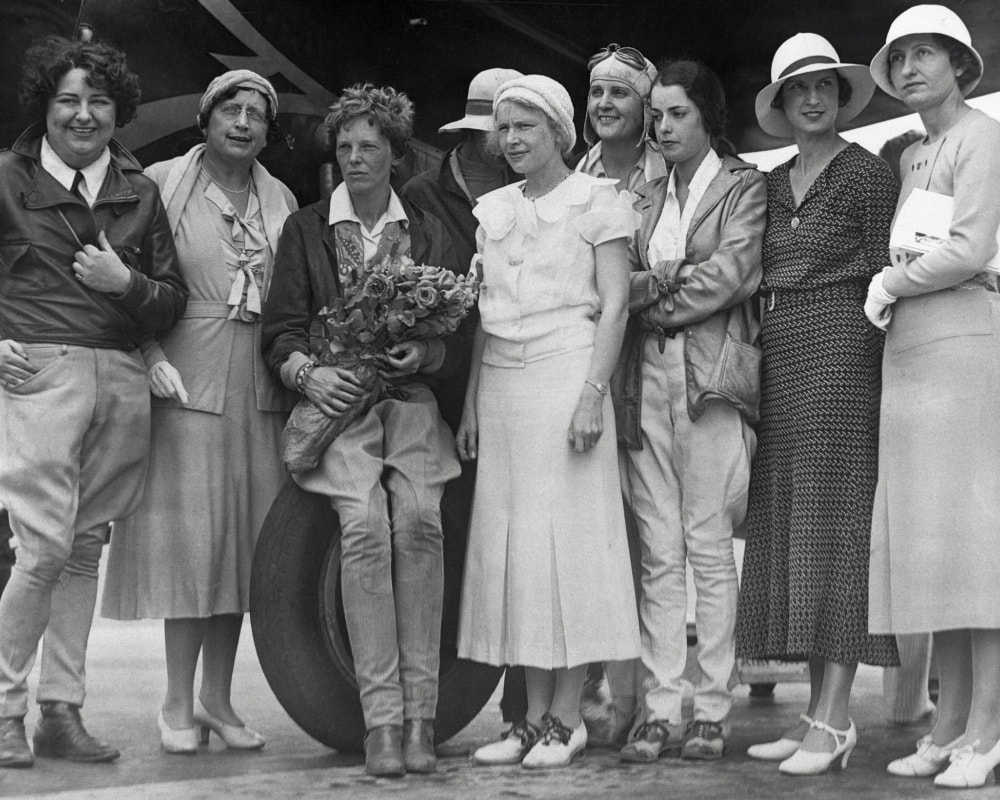
In her final letter she wrote before embarking on her fateful flight across the Pacific, she wrote the following: “Women must try to do things as men have tried. When they fail, their failure must be a challenge to others.”
Where It All Began
To understand the incredible story of Amelia Earhart, we need to go all the way back to the very beginning. Born in 1897 to parents Edwin and Amy, Amelia was brought into the world in her maternal grandfather’s home, federal judge Alfred Gideon Otis.

For her parents, Amelia was a blessing, especially after their first child was stillborn. She also had a younger sister Grace, who looked up to her and considered her to be her hero.
Call Me Meeley
What some of the fans don’t realize is that Amelia went by a nickname. That’s not all though, the future pilot would carry her nickname well into her adulthood. Friends and family alike would refer to her as “Meeley,” while her sister Grace would go under the alias “Pidge.”
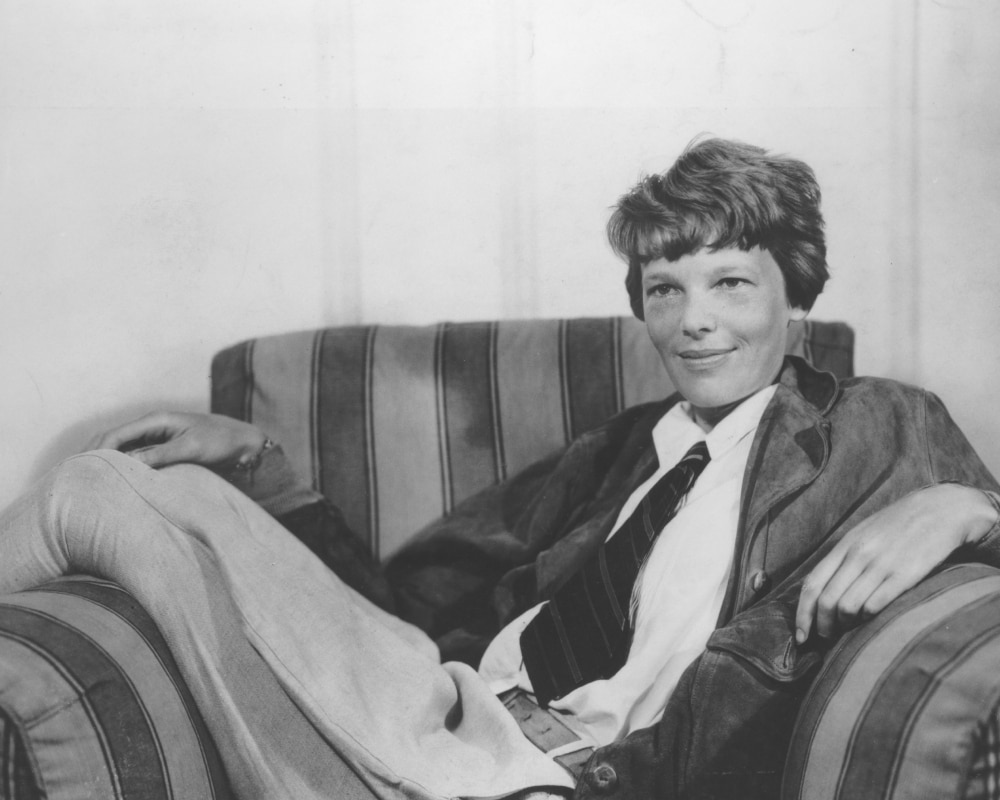
This fitted with the way that their mother didn’t want to raise as stereotypical girls. She wanted them to find their own identity and do things their way.
Hunger For Adventure
Amelia Earhart’s eagerness for adventure began way back when she was just a child. The future pilot would embark on mini adventures with her sister around their neighborhood and even further. Together, the sister duo would do daring things such as hunting rodents, climbing trees, and sliding down hills.

This only added to Earhart’s reputation as a tomboy: the girl who would do things that girls of the time didn’t traditionally do. She did one thing in her childhood that truly kickstarted her flying career…
First “Flight”
It seems that Earhart’s first taste for flying came when her uncle made a ramp for her, with the intention of using it as a mini roller coaster – similar to one she went on as a child. It was with this ramp that Earhart took her first flight, gliding off the ramp and in the process, ripping her dress and injuring her lip.

She described the experience as a “sensation of exhilaration.” After surviving her epic leap, she said to her sister, “Pidge, it’s just like flying!”
Childhood Dream
Amelia Earhart’s natural inclination to be an independent woman started way back when she was just a child. When she was young, she would do daring things such as hunting rats with a rifle and climbing trees. She even made a scrapbook that consisted purely of newspaper articles about successful women.

The first time Earhart got on a plane, she knew that she wanted to take to the skies. After working as a truck driver, she paid for her own flying lessons and flew for the first time in 1921.
Strange Education
When you end up becoming a legend like Amelia Earhart, it’s surprising to hear about her peculiar education. During her teenage years, Amelia Earhart lived with her grandparents. However, she received an unorthodox form of homeschooling from her mother. A fan of reading, Earhart could often be found in her family’s library.

By the time 1909 came around, Earhart and her sister finally got the chance to enroll in an actual school. She was already 12 years old when she entered seventh grade.
Record Breaker
Just a year after taking flight for the first time, Earhart took her yellow Canary and flew 14,000 feet up in the air. At the time, it was the world altitude record for a female pilot. In light of her record-breaking feats, the world governing body for aeronautics gave Earhart her official pilot’s license in 1923, making her the 16th woman to ever be given one.
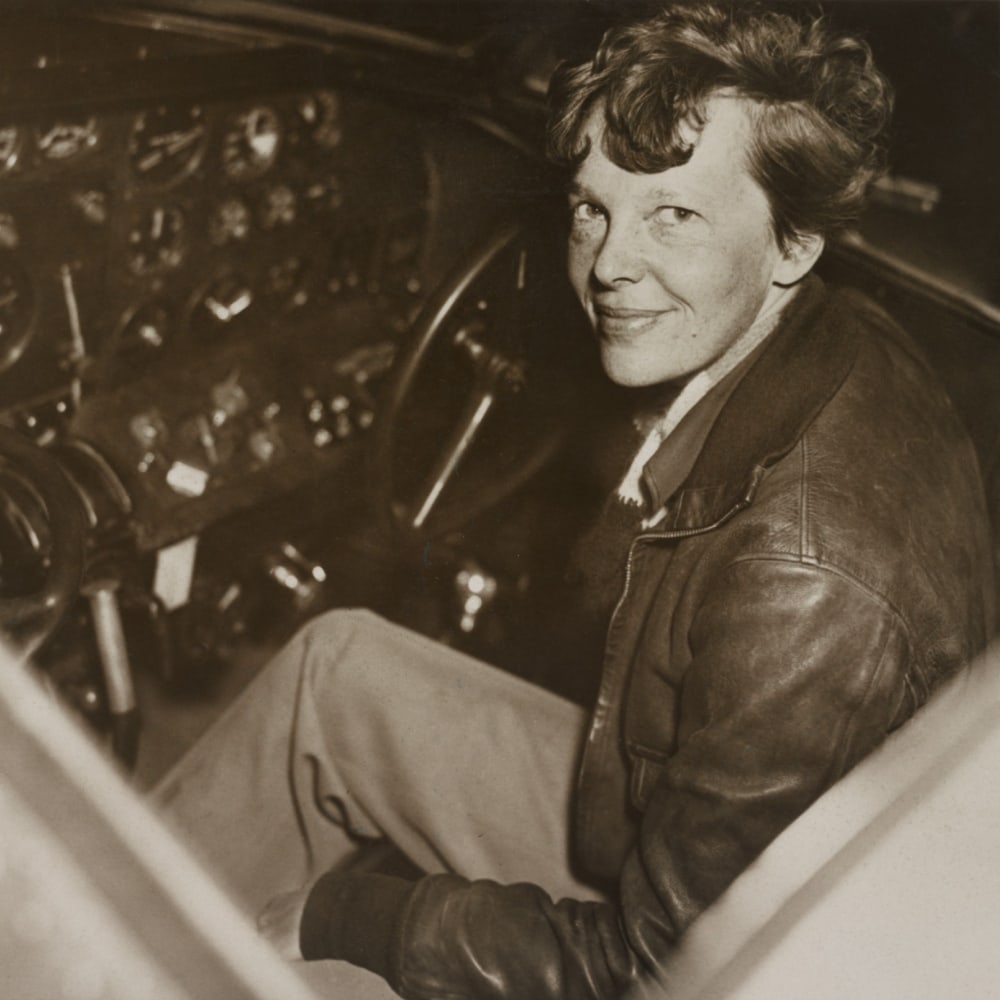
Another record she set was being the first woman to ever fly across the U.S. nonstop, from coast to coast.
Married Her Publicist
Soon enough, Earhart became a public figure, which meant that she needed a publicist. When she started working with George P. Putnam, she never anticipated their working relationship turning into a romantic one. However, she played incredibly hard to get, with Putnam having to propose six times before she said yes.

This was rooted in her burning desire to remain an independent woman. “You must know again my reluctance to marry, my feeling that I shatter thereby chances in work,” she wrote to him.
I Am Not Mrs. Putnam
Despite tying the knot in 1931, Earhart was adamant about being known by her maiden name. When the New York Times published the headline “Mrs. Putnam flies Atlantic in record time” in light of her Atlantic crossing heroics, Amelia wrote to the publisher Arthur Hays Sulzberger and courteously asked him to refer to her in a different way.
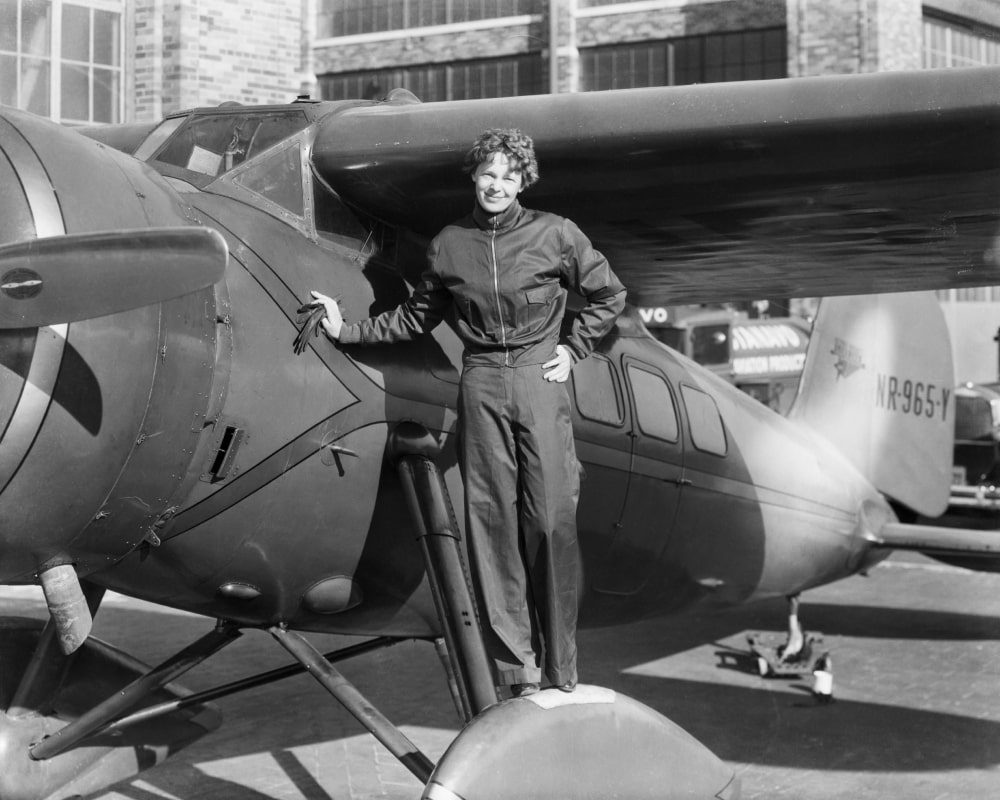
She asked that from that point onwards, refer to her in the paper as Amelia Earhart. She wanted to be known professionally, and not in reference to her husband.
The 99s Are Still Alive
Amelia Earhart ultimately represented the idea that women can do anything that men can, which was an unpopular sentiment during her time. Her efforts to promote gender equality came to fruition when she founded the organization, the Ninety-Nines.

It was called this due to the following fact: out of the 285 licensed American female pilots of the time, 99 of them, including Earhart, assembled to support each other. The organization has since gone international and helps women from 44 different countries.
Pop Icon
Due to her longlasting reputation as a symbol of female empowerment, Amelia Earhart has been represented many times in pop culture. One song that addresses the pilot’s disappearance is “Amelia” by Joni Mitchell.

“I was thinking of Amelia Earhart and addressing it from one solo pilot to another…sort of reflecting on the cost of being a woman,” Mitchell wrote. Earhart has also been portrayed in movies such as Night at the Museum 2: Battle of the Smithsonian and Amelia, by Amy Adams and Hilary Swank, respectively.
Her Car Was Recently Stolen
Amazingly, years after vanishing, Amelia Earhart’s vintage car also went missing in 2018. There are only 14 models of the green and black 1932 Hudson Essex Terraplane that exist and Earhart’s, which is currently owned by car collector Jim Somers, was reportedly stolen before being found in an L.A. neighborhood less than a week later.

Earhart promoted the car during the Great Depression and after fixing the engine and cosmetic work, Somers’ model is now worth between $250,000 and half a million bucks.
Eaten By Crabs?
Although Tighar has been on more than 13 separate expeditions to the island of Nikumaroro to try and uncover Amelia Earhart’s remains, the reality is that the giant coconut crabs that inhabit the island may have already beaten them to it.

According to Inverse Science, crabs may have eaten her remains a long time ago. Although there is no substantial evidence to suggest that this definitely happened, Tighar doesn’t want to leave any stone unturned on the Pacific island.
National Hero
When Earhart returned home from her history-making trip, she was welcomed by a huge parade in New York City. That wasn’t all though. Congress also presented her with a Distinguished Flying Cross; the first to ever be given to a woman.
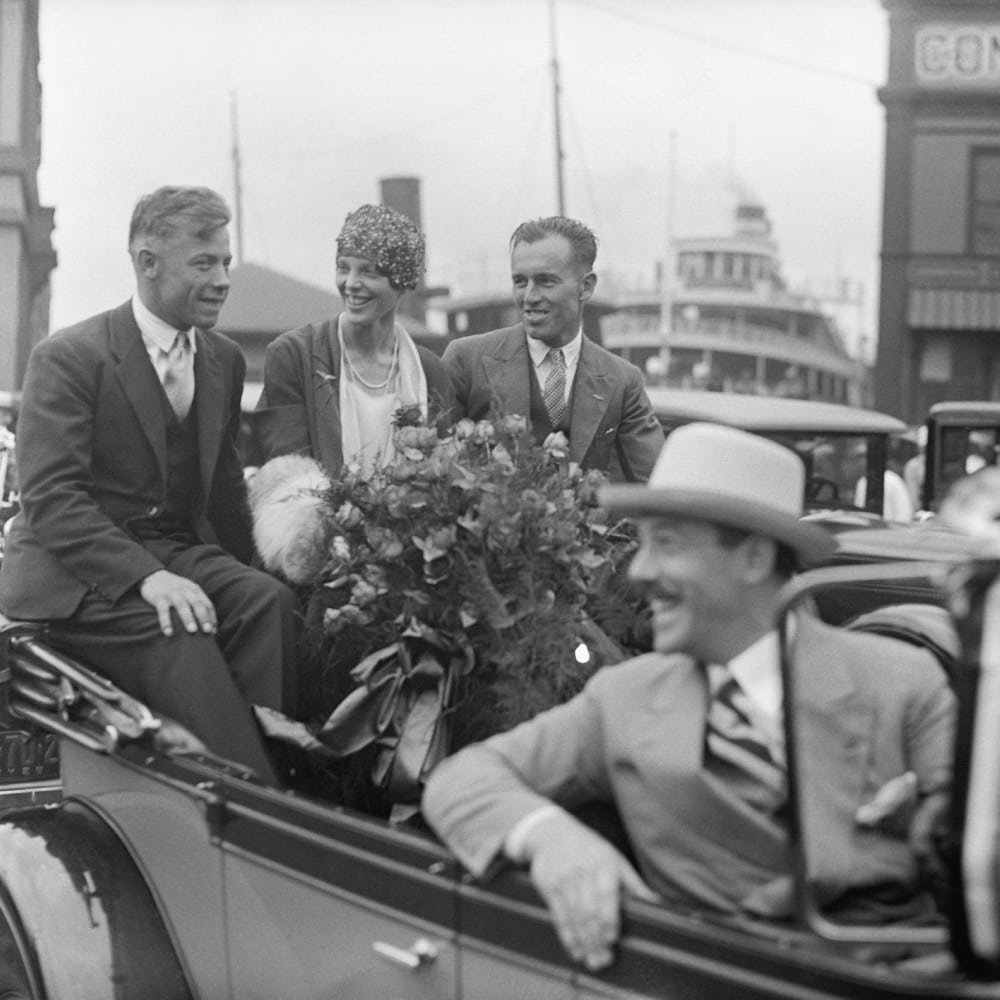
However, her impact stretched far and wide to other parts of the world. “She has succeeded in proving that the flight is not beyond the knowledge and the capacity for sustained endurance which a woman can acquire,” the Manchester Guardian wrote.
She Was A Spy?
Another urban legend that was being thrown around during this time revolved around the nature of Amelia Earhart’s trip. At one point, there were intense rumors that former president Franklin D. Roosevelt had actually sent Earhart on a secret mission as a spy.

Upon successfully completing her mission, Earhart returned to the U.S. and as part of the deal, lived the rest of her days under the name Irene Bolam. Nevertheless, this is purely an urban legend, without any factual evidence.
New Results
It is Richard Jantz, a professor at the University of Tennessee, who now believes that those very bones actually belonged to Amelia Earhart. Although the bones were pretty much forgotten about after their 1940 analysis, Jantz inspected them once again through a collection of photos.
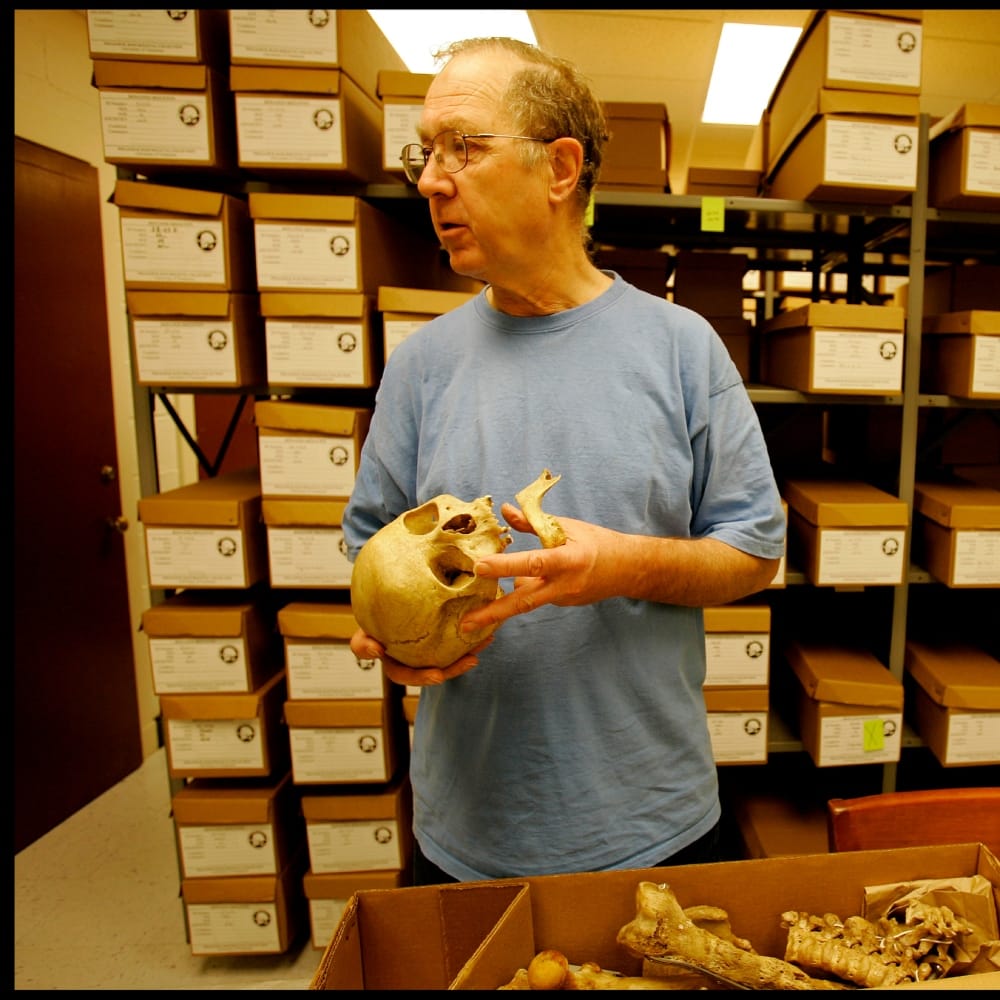
Although he didn’t have the actual bones in front of him, Jantz was confident that he could process the photos through a computer program and work out both the gender and ancestry of the person.
Direct Match
Using the measurements of the bones and the photos, Jantz took his findings and compared them with Earhart’s height and weight at the time of 1937. He was able to collate such information from both documents about Earhart as well as photos of her.

After close inspection and a stunning cross-reference, Jantz came to the conclusion that the results from the bones discovered in Nikumaroro were indeed a direct match to Earhart. He was convinced that they belonged to her.
Jantz Is Convinced
Professor Richard Jantz is an important figure in the exploration of Amelia Earhart. This is because, unlike many other researchers covering the mystery, Jantz’s findings have made him absolutely convinced that the bones do belong to her.

“From a forensic perspective, the most parsimonious scenario is that the bones are those of Amelia Earhart,” he wrote. “Until definitive evidence is presented that the remains are not those of Amelia Earhart, the most convincing argument is that they are hers.”
Similar Person
One thing was for sure; if the bones didn’t belong to Earhart, then they certainly belonged to a woman from a similar background. At least, this is what Jantz thinks. “[They were] more similar to the Nikumaroro bones than 99 [percent] of individuals in a large reference sample,” he said.

“If the bones do not belong to Amelia Earhart, then they are from someone very similar to her.” This heavily suggests that it was, in fact, Earheart who ended up on Nikumaroro.
Is It True?
It seems like if we are to take Jantz’s words as gospel, then this would mean that Floyd Kilts, that old coastguard who told that story all those years ago, was actually right. This would also mean that Amelia Earhart, and most likely, Fred Noonan, both died as castaways on the Pacific island of Nikumaroro.
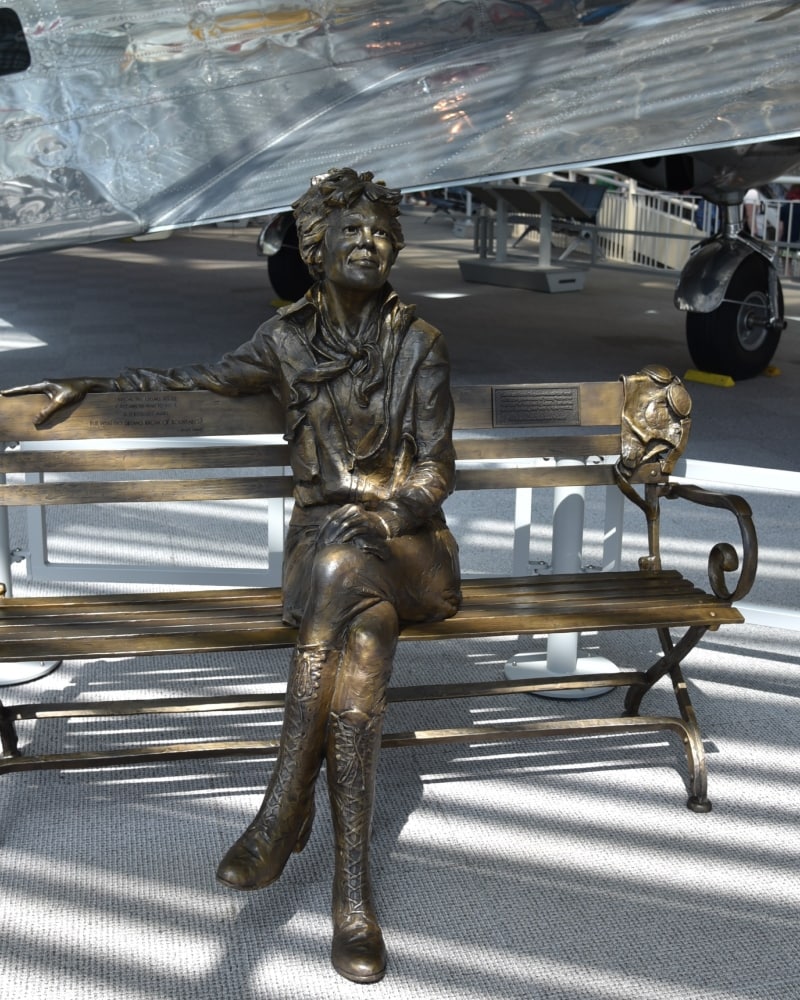
No matter what the truth might be about her fate, one thing is for sure: Amelia Earheart lived life to the fullest, and gave her life for gender equality.
Case Closed?
While theories still run wild about what exactly happened to her, Jantz’s findings pretty much verify that Nikumaroro was indeed the place that Amelia Earhart ended up. The only other explanation is that another woman with an identical physique/background died on the island at exactly the same time that Earhart was flying in this part of the world.
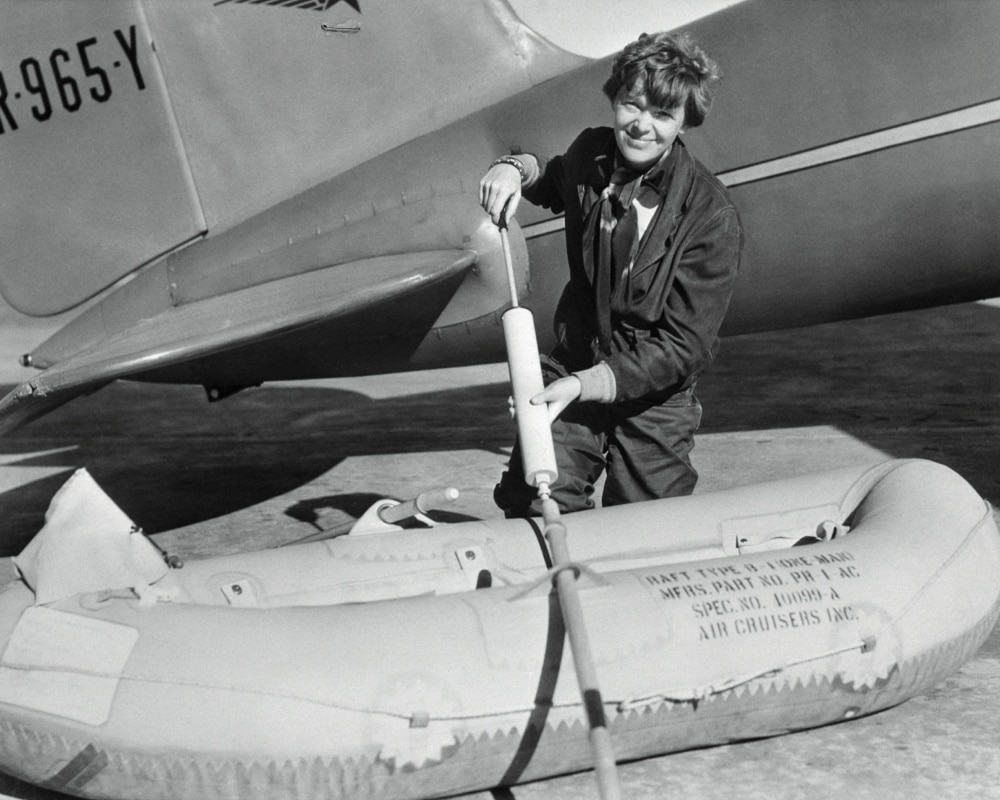
Jantz’s research has certainly taken the mystery into another intriguing direction and possibly, one step closer to the truth.